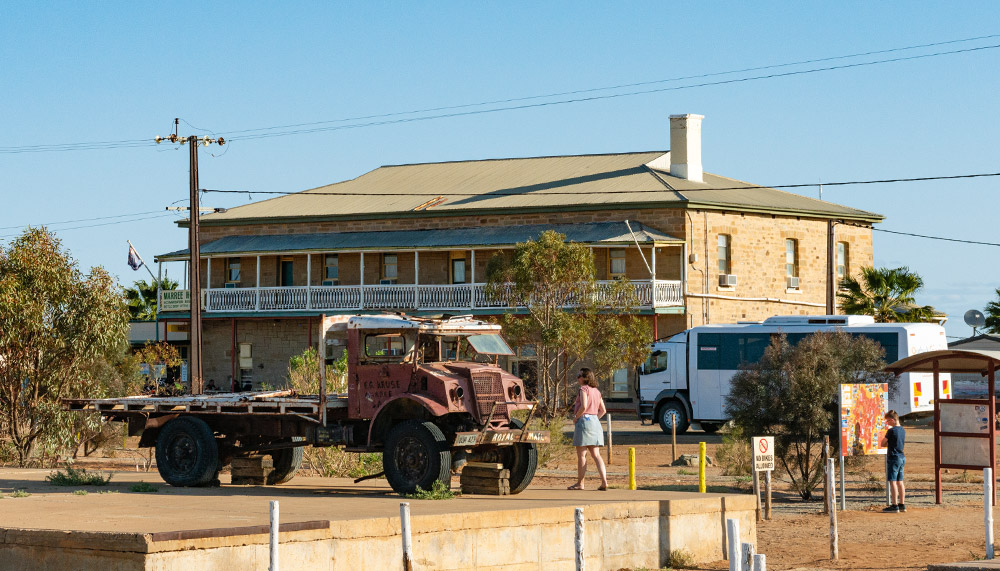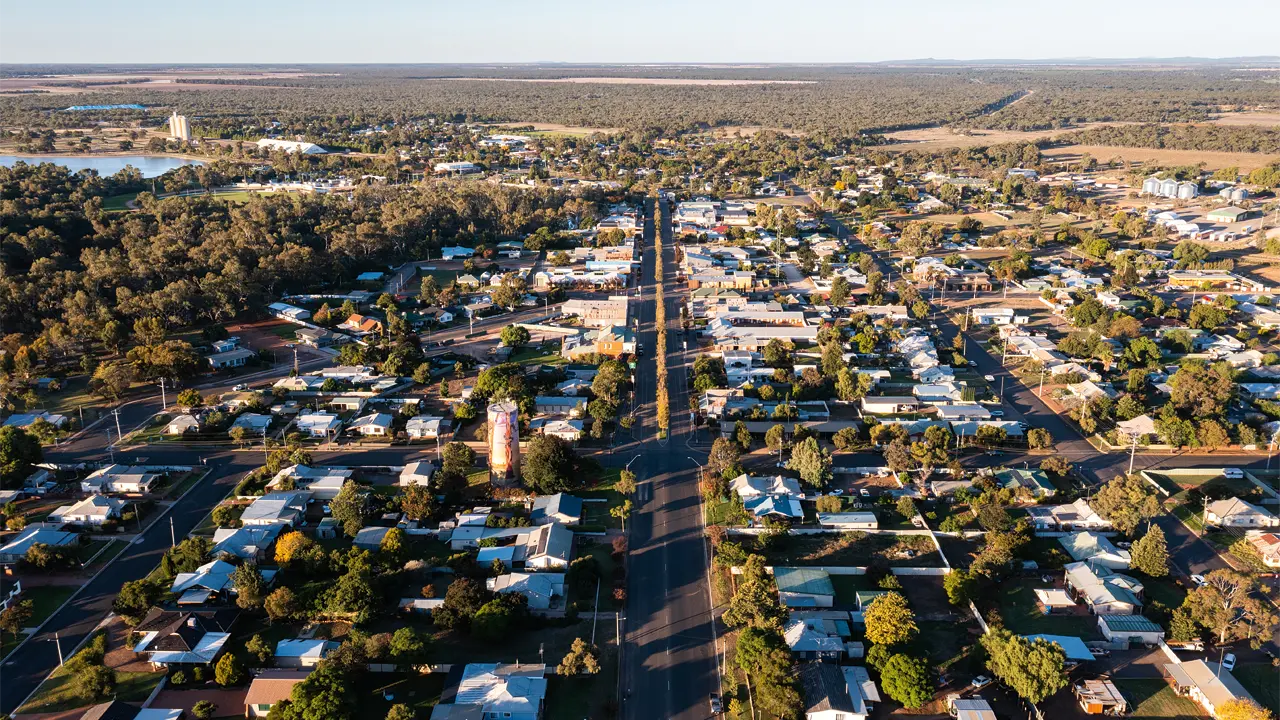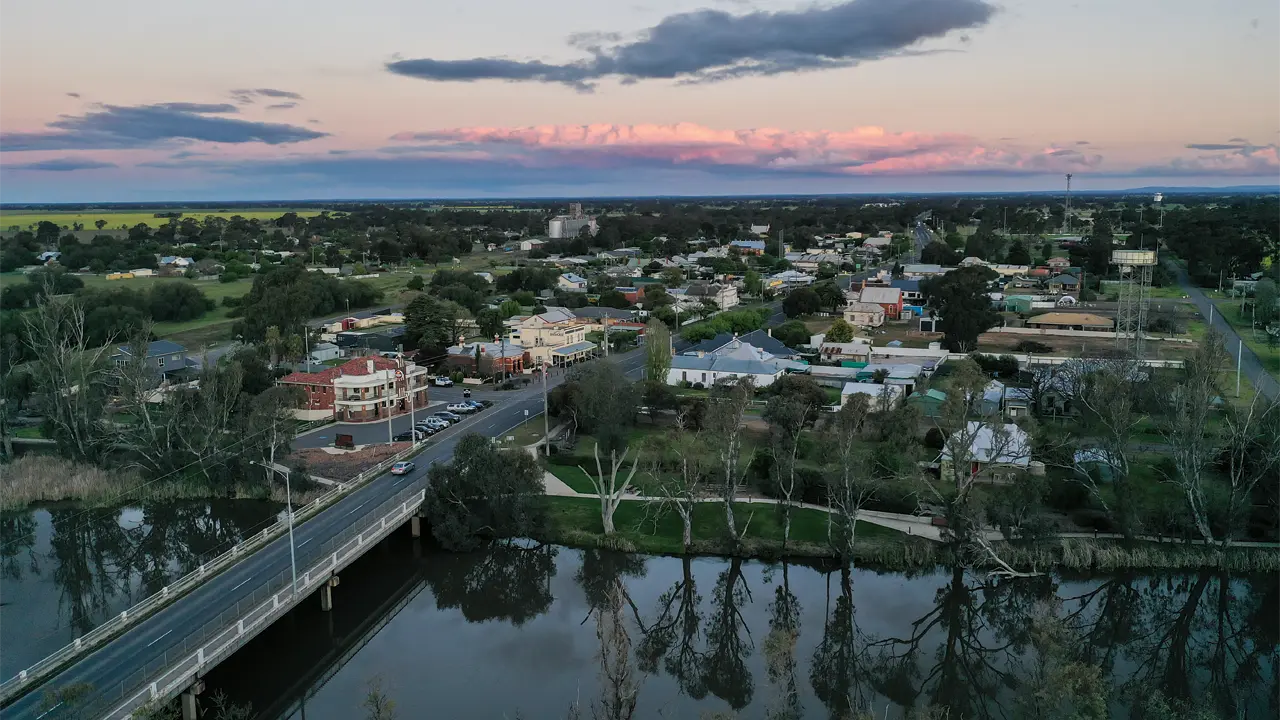This small SA desert outpost is located at the end of the bitumen, before the start of the legendary Birdsville and Oodnadatta tracks.
Story + Photos Ken Eastwood
It’s a chilly spring morn, and three of Marree’s longstanding residents are soaking up the sun, as they do nearly every morning, on the site of the old butcher’s shop. From their plastic chairs Max Dadleh, Jan Palo and Irene Zada can observe most of what’s going on in the desert outpost. It’s generally super quiet, but they do see a steady stream of fully kitted out 4WDs coming in from Lake Eyre, the Birdsville Track and the Oodnadatta Track. They watch occasional road trains heading to or from nearby stations such as Muloorina, Dulkaninna and Clayton. And they look across at the many railway relics that take pride of place in the centre of the community, from a time 50 years ago when Marree was where the railway changed over from standard to narrow gauge. Back then, Marree was a thriving town of 600 people.
No trains run here at all now, and according to the latest census there are just 65 residents, with a median age of 52.
“You can hear a pin drop night-time,” Max says. “It’s a nice and peaceful place. When the wind comes it’s not too peaceful though. We had 90km/h winds the other day.”
Like about 10 people in town, Max is of Afghan heritage. Born in Marree, he can just remember his father and grandfather being involved in the thriving camel train transport business here, taking goods to Birdsville and elsewhere. At one time there were hundreds of camels based in the town, but as mechanisation took over (including the truck of legendary postman Tom Kruse), they were all released into the desert.
Irene, also of Afghan heritage, worked as a cleaner on the Ghan train, which used to run through Marree before the narrow gauge was abandoned in the 1980s and the Ghan route relocated further west. “It has to be a good town if I’ve lived here all my life,” she says.
Palo, 94, who had moved to Australia from Czechoslovakia in 1950, worked on the railways in Marree from 1963 as a goods mover and foreman, shifting 44-gallon (170L) drums and 40kg bags of cement from one train to another, until a 22-tonne container crushed his hand in the 1960s. “I was given no painkiller, nothing,” he says. “I had to take a railcar from Port Augusta to Adelaide on my own.” After a 12-month stint in hospital, he returned to Marree.
Palo, Max and Irene used to sit under the verandah awning of the old butcher’s shop, which is now Palo’s home, but like many of the single-storey buildings in town, the verandah has seen better days. Several houses are a wonderful ramshackle assortment of Besser blocks, corrugated iron, old railway sleepers and stonework, showing great bush ingenuity and practicality in a settlement that’s 650km by road north of Adelaide. The average income is about a quarter of the national average and rent costs an average of $80 a week.
Across the road from the sunning trio, Reg Dodd OAM, tour leader, author, entertainer and chair of the Marree Arabunna people’s committee, is in the community centre. About 50% of the population of Marree is Aboriginal, in an area with Traditional Owners such as the Arabunna, Dieri, Kuyani and Adnyamathanha peoples.
This story excerpt is from Issue #146
Outback Magazine: December/January 2023










